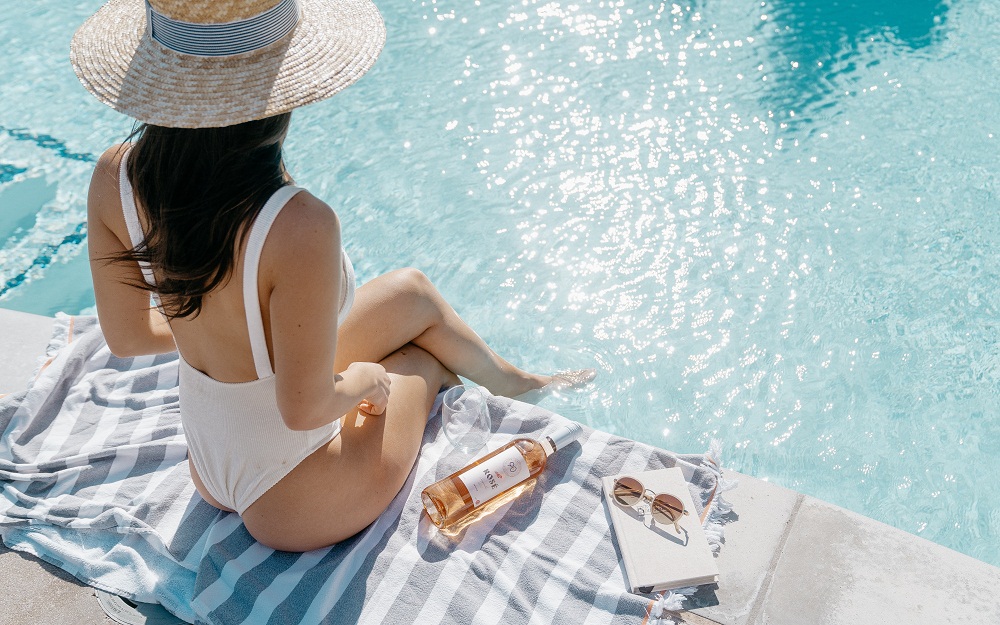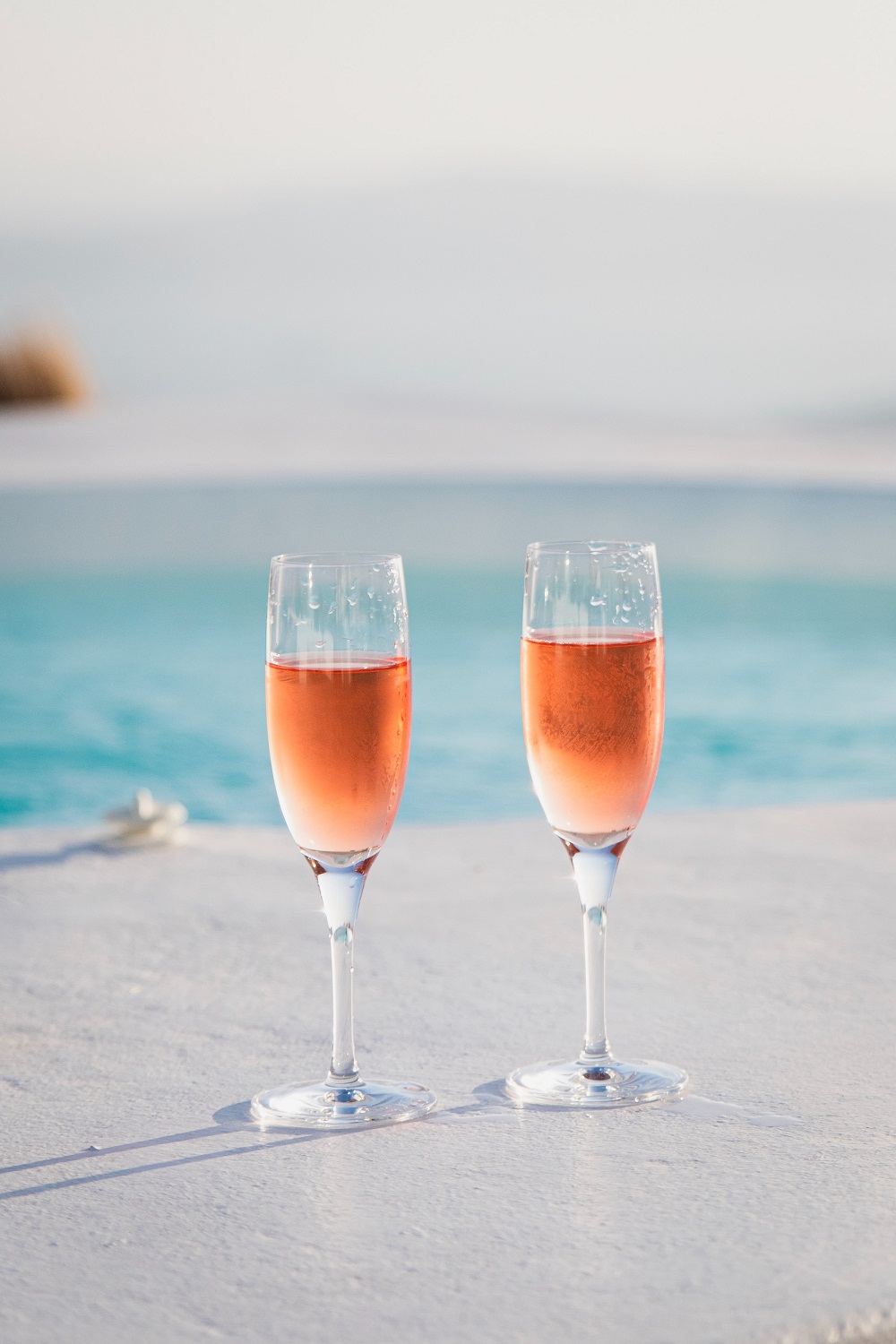It’s time to take rosé more seriously now that quality has improved and drinking habits have changed.

Never was a hashtag more ideally suited to Singapore than #poolsiderosé. Not only is it the perfect summer party drink for a city that swelters all year round, but it is also the latest wine craze for trendsetting Singaporeans.
In fact, rosé has been on the rise for years now. The French have been drinking more pink than white for over a decade, and rosé is currently the fastest growing wine category in the US. Three factors explain why pink became so popular: improving quality, changing drinking habits, and the whims of fashion.
PROVEN PROVENCE
Until the mid-2000s, very few people took rosé seriously. Most pink plonk was exactly that: insipid and uninspiring. However, the pale, dry rosés of Provence would change all that, showing the potential for a new breed of pink wine with ambitions for top quality – and top prices.
One of the pioneers of premium rosé is Château d’Esclans in Provence. Best known for their juggernaut Whispering Angel brand – now reputed to produce more than five million bottles per year – they also make tiny quantities of their top wine, Garrus, selling for more than $200 per bottle. Such pricey pinks might raise eyebrows, but they also attract high critical scores – as well as giving the drinker serious bragging rights.
Garrus is made using similar techniques to top-end white wine, including fermentation in brand-new French oak barrels, giving it fuller body and powerful sweet spice flavours. This was controversial at the time – oak was previously assumed to be incompatible with rosé – but it has proved to be very successful.
However, most Provence rosé is unoaked, emphasizing the purity of the fruit – from raspberry to strawberry to cherry. With its dry, savoury finish, relatively full body and attractive pale colour in the glass, it has become the definitive rosé style – and the de facto choice for parties, especially when they’re poolside.
PINKS THAT GO POP
Rosé is usually seen as a poor cousin to other still wines, but for champagne, it’s different. For somereason, pink bubbles have always come at a premium – even though many of them are made simply by adding a dash of red wine to existing champagne, which is rarely conducive to quality. The best examples use more diligent winemaking – try the vintage rosés of Louis Roederer or Pol Roger for pink champagne at its best.
PINK POWER
Beyond the style of the wine itself, Provençal pink comes with cultural connections that have been integral to its popularity. The region’s beautiful Mediterranean coastline teems with luxury yachts, and having rosé on board is an absolute must. Furthermore, serving it from magnum has become the ultimate party move, to such an extent that yacht fridges are now designed to accommodate these large-format bottles.
Celebrity endorsement has helped too, most notably from Brad Pitt and Angelina Jolie, whose Miraval rosé has become one of the region’s biggest brands – and is consistently delicious. They have been followed by the likes of Jon Bon Jovi and John Legend, among others. There was even a brief trend for ‘brosé’ which championed men drinking pink.
Regardless of gender, Provence rosé is riding high – but that doesn’t mean that it’s the only pink drink in town, and there are lots of other options available for the curious wine drinker.
ROSÉ ROUND-UP
Beyond Provence, France has the largest variety of other pink wines. For example, the Loire Valley produces Rosé d’Anjou, which has medium sweetness and around 11% alcohol, making an easy-drinking, simple style. Pinot Noir rosé comes from Sancerre and Burgundy, although it is rarely the greatest expression of that grape, while Bordeaux makes decent dark-coloured rosé, mostly from Merlot.

There are many options from elsewhere too: Rosado Rioja from Spain, Bardolino Chiaretto from the shores of Lake Garda in Italy, and a plethora of options from the New World, made from everything from Shiraz to Sangiovese. In fact, there’s a pink for all occasions, although the pale Provençal style remains the most popular by a significant margin.
Exploring the world of rosé is no small task, but there’s one tip to always keep in mind: always buy the most recent vintage, because most rosés do not improve after 12 months in bottle. Plus, because they are usually bottled in clear glass, they are at even greater risk from deterioration through exposure to light.
THINK PINK, DRINK PINK
Whether you are hosting a summer poolside party or having an intimate Michelin-starred dinner, rosé wine has proved that it deserves to be taken seriously. After all, there is no intrinsic reason why pink wine can’t achieve the same quality as white or red, as winemakers around the world are proving.
Right now, Provence rosés are the height of fashion, but there’s no doubt that we will see more premium pinks emerge in years to come: the future is indeed looking rosy.

Writer, educator, Master of Wine and occasional pianist, Richard has worked in wine since 2001, first in London and now in Singapore as resident MW at 67 Pall Mall, the Members’ Club for wine lovers, opening later this year. He has written regularly for JancisRobinson.com since 2008, as well as judging, presenting, educating, tweeting and sometimes singing about all things vinous.
